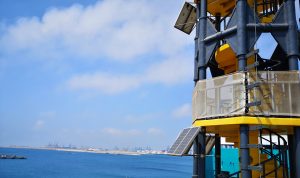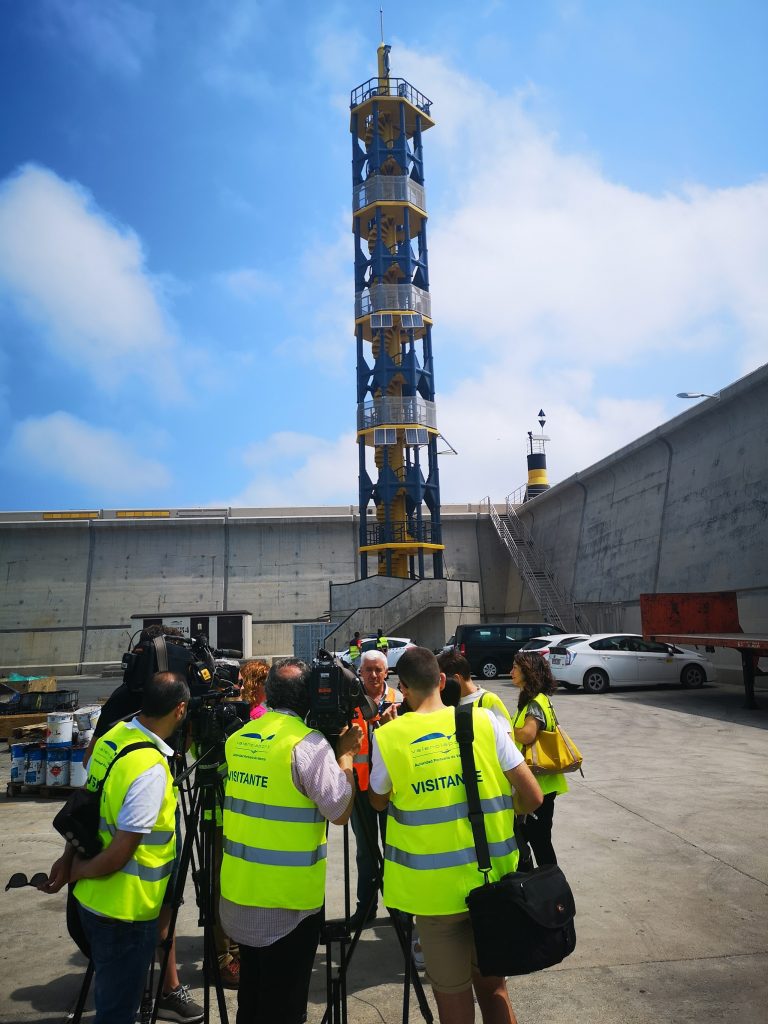
Valencia, July 1, 2019. – In the Port Authority of Valencia (PAV) has been celebrated on July 1 as the World Day of Aids to Maritime Navigation, adding to the general call launched from State-owned Ports Body to carry out some symbolic gestures that remembered the importance of the signs to ensure safety in the seas and oceans.

In case of the PAV, between 12:00 and 12:30h the lighthouses have been turned on and has been invited to journalists to climb to the lighthouse singular, new lighthouse of enlargement north. An enlargement which was inaugurated on 23 April 2012, but until the night of San Juan of 2015 did not have its lighthouse final.
Valencian journalists who have been able to attend the invitation of the PAV have climbed to the lighthouse, which from a height of 32 meters projects its lights to 22 or 25 miles, offshore. At the foot of the lighthouse have been attended by José Vañó, expert in maritime signaling of the Port of Valencia.
International recognitions
The new lighthouse of the port of Valencia has received diverse international recognition. He was a finalist in the annual awards organized by the IABSE, the International Association of Bridges and Structural Engineering; an award that was joining the award obtained in 2016 in the JEC World Innovation Awards, the most important distinctions of the world in the ambience of the composite materials.
The lighthouse designed by the architect Ignacio Pascual, the exdirector of Infrastructures of the Port Authority of Valencia, is the first one of the world constructed entirely with composite materials like the fibre of carbon and the fiberglass, what big agility awards him, with only 3.000 kilos in weight. In this sense, the use of composite materials ensures greater resistance to exposure to marine environments as they are not affected by corrosion, less works of maintenance and a reduction of 20 % of the emission of CO2 in the constructive process on having needed less displacement of heavy materials.
The new installation has LED technology, which allows a range of 25 nautical miles, with an electrical consumption of 70 watts and a useful life of 100,000 hours. Likewise, it is self-sufficient when using renewable energies. Specifically, the lighthouse incorporates ten solar panels oriented energetically to the south and a vertical axis wind turbine, which contributes to significantly reduce its energy consumption.

